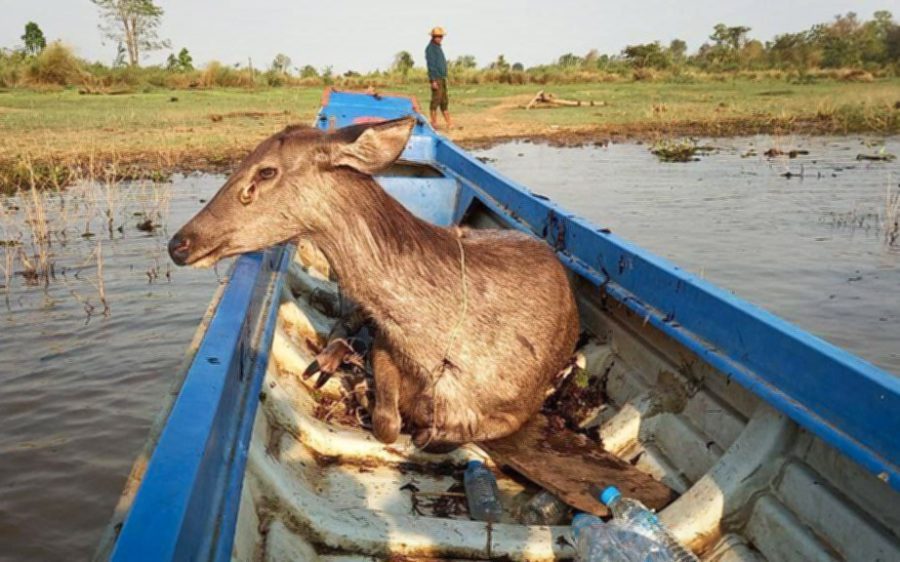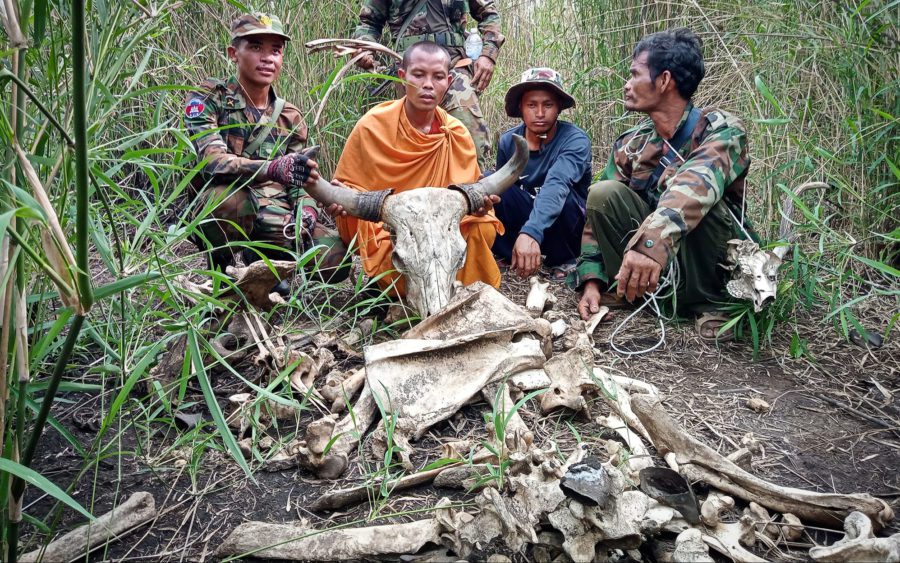Patrollers in an Oddar Meanchey community forest say they’re witnessing an increased rate of wild cattle and deer deaths in the first months of this year, compared to last year, with one patroller attributing the rise in poaching to out-of-work people and poor law enforcement.
Tho Thoross, a monk in charge of the protected area, also known as Sorng Rukhavorn Wildlife Sanctuary, told VOD on Friday that patrollers found three banteng, or Bos javanicus, and one red muntjac — a small deer known for its barking calls — dead in traps of branches and ropes in late March.
Patrollers also found one wild boar, or Sus scrofa, and one Cervus unicolor, commonly called sambar deer, alive in separate traps, and turned the rescued animals over to Wildlife Alliance. They are now in Phnom Tamao zoo, he said.

Thoross warned there seemed to be an increase in wild animal trap deaths and injuries, saying that patrols found a total nine animals dead for the whole of 2021 — three banteng and six sambar deer — compared to six animals in just three months this year.
The patrol leader added that the number of animals found to be killed is only a portion of the total, as they can only patrol so much of the 30,254-hectare area at a time.
When asked why there was an increase in crime so far this year, Thoross felt law enforcement authorities were not reacting sufficiently to stop forest crimes. He patrols together with soldiers, but beyond that he is not sure what actions authorities take.
“I have never seen the commune or village chiefs on patrol, and I do not know if the [provincial environment department’s] conservation officer patrols or not either,” he said.
He also noted that there were more people coming back from Thailand as Covid-19 hit both countries in 2021, and they may try poaching if they have no other jobs.
“Secondly, the perpetrators committing the crimes, it correlates with Cambodian workers coming back from Thailand. They do not have jobs, so they can [hunt].”
In Oddar Meanchey, Banteng are only found in this wildlife sanctuary, so Thoross is eager to protect them, he said. He added that the species, as well as red muntjac and sambar deer, only give birth once a year, making the endangered animals more vulnerable.
Bun Saluth, another monk who patrols the forest and is an internationally-recognized forest defender, said in the past they set up camera traps and observed herds of animals walking through the forests, but now the camera traps only sight a few scattered animals.
He added that poachers will cut the meat off the bones from felled wild animals and bring it to sell in both remote and public places, such as in Siem Reap province and Oddar Meanchey’s Anlong Veng and Trapeang Prasat districts.
Like Thoross, Saluth criticized local authorities, alleging that those who capture animals are only jailed for a short time and generally return to their activities after.
“We know the perpetrators and we have brought the perpetrators to authorities, but sometimes after less than a month, they release the perpetrators,” he said.
Oddar Meanchey deputy governor Dy Rado said Friday he was not sure offhand how many reports of poaching his office had received, adding he was outside the office. He claimed his province had been trying to strengthen protection on wildlife without going into detail how.
“Both for [conserving] the forest and the wildlife, we have implemented more stringent and effective measures, with regular patrols and arrests of perpetrators,” he said.













